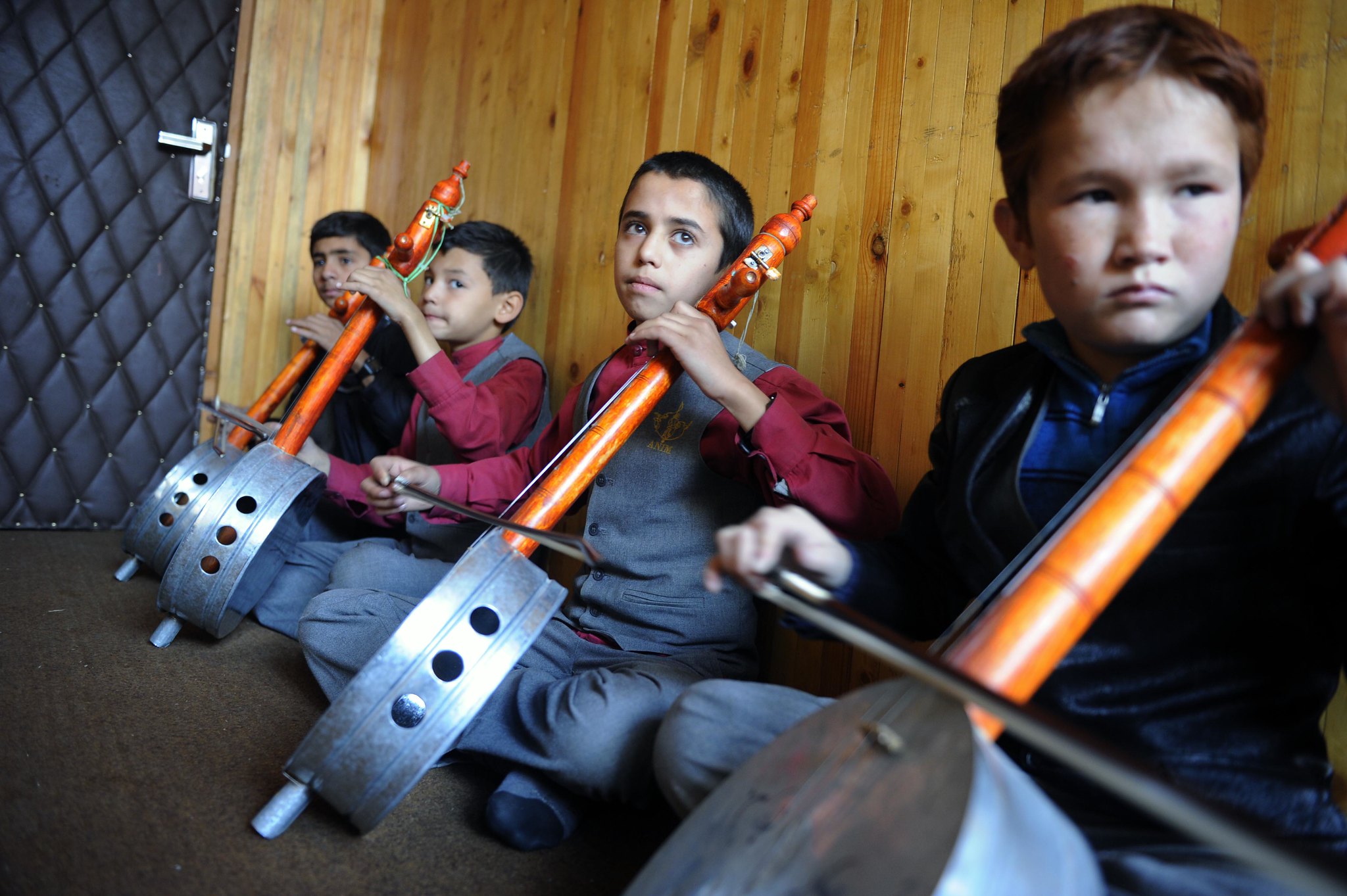New York City might not be the first place you’d think of in connection with Afghan music, but surprisingly enough, the city’s famous Metropolitan Museum of Art is home to one of the finest collections of traditional Afghan instruments in the world. Comprised of 29 different instruments, the collection was donated to the Met in 2015 by Mark Slobin, a former professor of music and American studies at Wesleyan University.
Slobin gathered the instruments between 1967 and 1972. During this five-year period, he traveled repeatedly to northern Afghanistan in order to conduct extensive research into Afghan music, culture, language, and general society. This fieldwork, along with the instruments themselves, would eventually prove to be more valuable than anyone anticipated.
Just a few short years later, the Soviet invasion of 1979 initiated a decades-long period of civil conflict in Afghanistan. During these challenging years, music became widely banned. Many musicians (and their instruments) either fled the country or were driven underground, and Afghanistan’s rich musical heritage fell into decline.
Slobin’s instrument collection—along with his in-depth research, which includes folk music recordings, films, and hundreds of music-related images—therefore stands as an important and rare glimpse into an aspect of Afghanistan’s culture that has been all but lost. As a result of Slobin’s work, the fascinating traditional Afghan instruments that visitors to the Met can see and learn about include:
The Qobuz
A type of fiddle widely used in northern Afghanistan, the qobuz is an ancient instrument of Turkic origin. The instrument is mentioned in the first comprehensive dictionary of Turkic languages, which was compiled in the 11th century. Shaped like a deep, curved ladle, the qobuz has a belly covered with camel or goat skin and two horsehair strings; a horsehair bow is used for playing, which generates a sound rich in overtones.
Believed to be a sacred instrument traditionally owned by shamans, the qobuz was popular during the 15th and 16th centuries for musical entertainment at Afghanistan’s royal courts. The qobuz featured in the Slobin collection at the Met was custom made for the popular Afghan folk musician Baba Naim.
The Dambura
Another traditional Afghan instrument of Turkic origin is the dambura (sometimes known as the dombra or dombyra). A type of lute typically made from a single block of wood, the dambura features a long, thin neck; a deep, oblong bowl; and two playing strings.
It is played either by plucking or strumming the strings. In some regions, musicians will also bang or strike the instrument while playing in order to produce a strong percussive sound.
The Waj
More formally known as a Kafir harp, the waj is a traditional arched harp, typically with either four or five strings, used by the Kafir people of northeastern Afghanistan’s Nuristan province. Interestingly, although similar harps were historically widespread throughout Central Asia and India, the waj is not found anywhere else in Afghanistan today.
The instrument features two main components: the soundbox, made from a hollow piece of wood covered with a thick, stretched animal skin; and the stringholder, which is a curved branch positioned on top of the soundbox. Traditionally, the waj is played at social gatherings, usually as an accompaniment to epic storytelling or heroic songs.
The Nai
One of the few wind instruments used in Afghan music, the nai (or ney) is an end-blown flute of Persian origin. The instrument is little more than a hollow tube, usually made from a piece of hollow cane or a large reed, with five or six finger holes and one thumb hole (some nai also feature decorative painting or carving). Given the nai’s basic, simple design, it’s hardly surprising to learn that the instrument is one of the oldest still in use. It has been played continually for roughly 5,000 years.
The Ghichak
A very popular instrument in Afghanistan’s central and northern regions, the ghichak is a type of two-stringed fiddle that is played with a kaman (a horsehair bow). Distinct from many other traditional Afghan instruments which are made of wood or natural materials, the body of the ghichak is made from a large metal tin, which gives the instrument its characteristic sound.
Looking Ahead: The Future of Afghan Music.
Happily, although Afghanistan’s musical heritage suffered greatly during the country’s conflict years, traditional music is once again on the rise in Afghanistan. In recent years, a number of local and international organizations have launched programs aimed at reviving Afghanistan’s musical traditions and bringing back the use of traditional instruments.
For example, the Aga Khan Trust for Culture’s Master-Apprentice Music Training Program sees hundreds of students learning to play traditional instruments under the tutelage of master musicians in Kabul and Herat. Likewise, the Afghanistan National Institute of Music, founded in 2010 by musicologist Dr. Ahmad Sarmast, provides children and young teens with training in general academics and music, with a particular focus on traditional Afghan music.
Featured Image courtesy US Embassy Kabul Afghanistan

